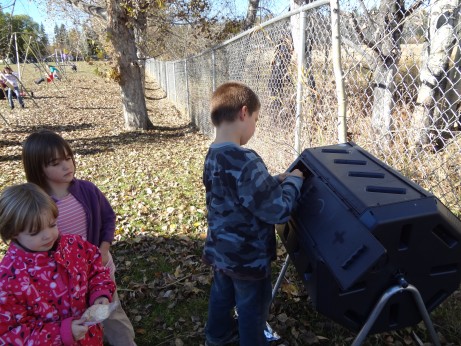
Ella’s Zoo
Regular schools meet the needs of most children in BC, but one single model of schooling can’t hope to reach every learner. SD27 has several alternatives to regular schooling that enable students to participate and be successful. One of these alternatives is the Distance Education Program. This program allows students who live too far from a public school, or whose families prefer to school their children at home, access to professional teachers and resources. One of the options within the Distance Education Program is the “Shared Classroom”. Frances McCoubrey and Martin Kruus, two of the Distance Education teachers who run the program, recently outlined how it works at a School Board Education Committee Meeting.
The ‘Shared Classroom’ option allows two groups (one Primary and one Intermediate) to meet two days per week for social learning with a project-based focus. Each four-six week block is planned by teachers and communication with parents before each cycle ensures that parents know what is going on and how they can support the learning at home. It also means that throughout the year, trained teachers are able to focus on different skills and provide a balance across the curriculum. Each cycle has a different focus, within which the teachers are able to develop skills and teach elements of the curriculum that are challenging to do at home – for example, in the current project, students are undertaking research, contributing to a whole group culmination, participating in committees and learning how to present to others.

Flag Football
At present there are about 10 students in each group that span 3-5 grade levels. Small numbers mean that teachers can more easily differentiate tasks based on the abilities and ages of the students within the context of the projects. Because the teachers meet with the children for 12 hours each week, they get to know them better than they would in the regular Distance Ed program, where students receive one-on-one attention for a couple of hours every two weeks.

Declan’s Zoo
During the presentation, Timu Kruus, one of the students in the program, shared the first project his group did before Fall Break, called “Apples”. Timu did a great job of showing his enthusiasm for the project and sharing his understandings about what happened and what he learned. The next unit was “Canadian Historical Fiction-Short Stories” (all grades), followed by “Ancient Civilizations” (grades 3-7) and “Tree Climbing”, “Restaurant” and “Playground Design” (grades K-2). The final unit, “Zoo” involves all students.

Learning to Ski at Bull Mountain!
Field trips are an important component of the program. There is at least one trip per project cycle – directly related to projects or activities the students are doing that would be much more difficult or impossible to do from home. Sometimes these trips provide a ‘kick-off’ at the beginning of the project or they could occur during the project to support work going on. One focus on these trips is the opportunity to develop and practice empathy and other social skills. Multi-age groups provide an opportunity for leadership skill development and learning from peers as well as adults. In addition to Project Field Trips, monthly visits to Scout Island allow teachers to utilize this amazing local resource. Students participate in science-related inquiries, note seasonal changes and just enjoy being outside with others. At least one extended field trip, not directly related to class work, takes place each term as well. For example, last year students went to Tatlayoko Lake to camp for four nights and participated in an overnight, winter camping excursion to Bull Mountain, north of Williams Lake, this year.
According to McCoubrey, the best thing about the ‘Shared Classroom’ is the opportunity it offers to balance the nurturing and attentiveness a parent can bring to schooling with the expertise and skills a trained teacher can bring. For more information about the program, please contact principal, Mike Franklin (mike.franklin@sd27.bc.ca) or teachers Martin Kruus (martin.kruus@sd27.bc.ca) and Frances McCoubrey (frances.mccoubrey@sd27.bc.ca). Any of them can be reached by calling 250.398.5800.










 A highlight of the school year at Horse Lake Elementary School is ‘Literacy Week’. Running since 2008 and part of the school’s structured annual Literature Plan for the year, Literacy Week is something students and teachers alike look forward to.
A highlight of the school year at Horse Lake Elementary School is ‘Literacy Week’. Running since 2008 and part of the school’s structured annual Literature Plan for the year, Literacy Week is something students and teachers alike look forward to.